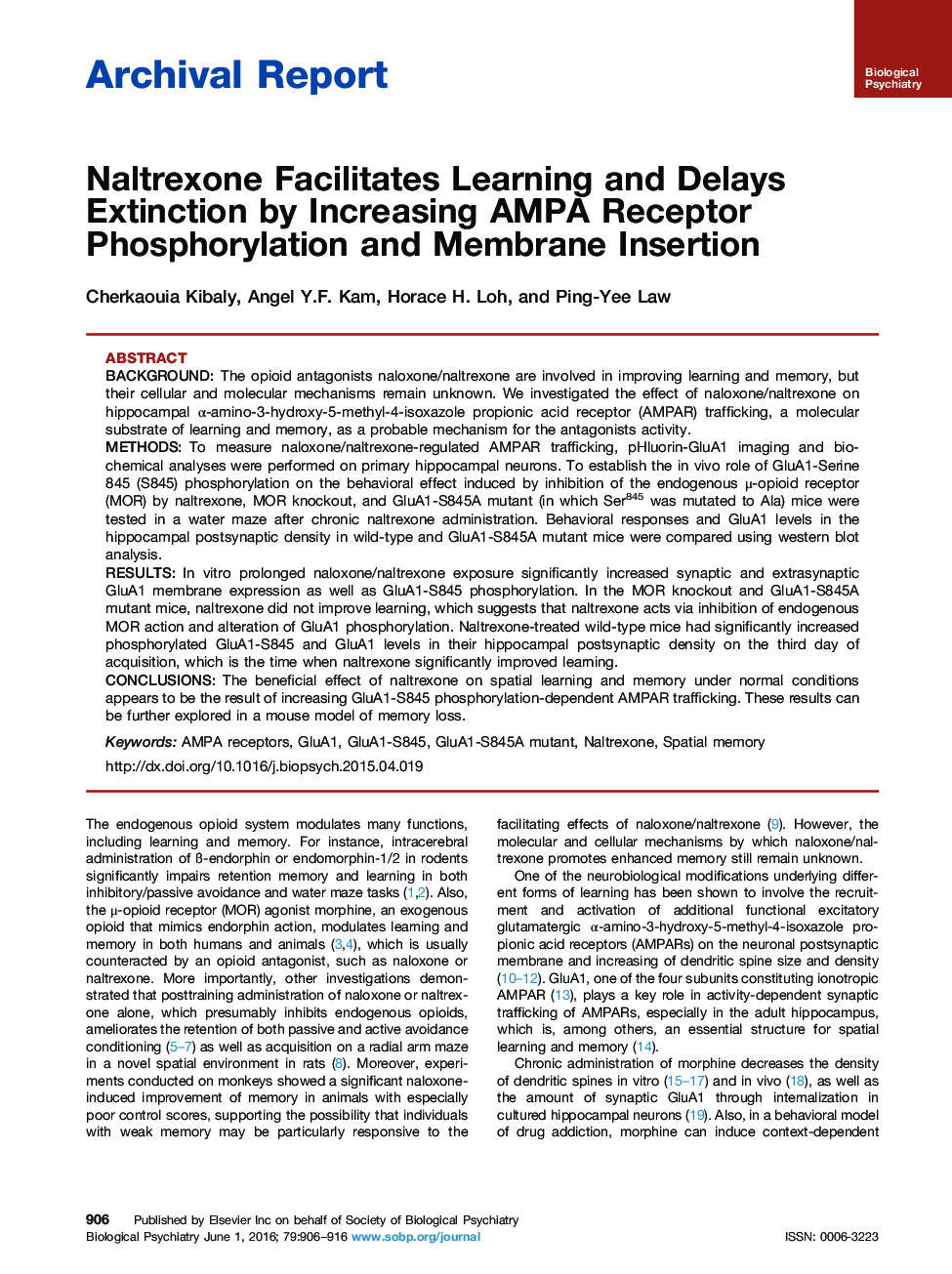| کد مقاله | کد نشریه | سال انتشار | مقاله انگلیسی | نسخه تمام متن |
|---|---|---|---|---|
| 4177085 | 1276386 | 2016 | 11 صفحه PDF | دانلود رایگان |

BackgroundThe opioid antagonists naloxone/naltrexone are involved in improving learning and memory, but their cellular and molecular mechanisms remain unknown. We investigated the effect of naloxone/naltrexone on hippocampal α-amino-3-hydroxy-5-methyl-4-isoxazole propionic acid receptor (AMPAR) trafficking, a molecular substrate of learning and memory, as a probable mechanism for the antagonists activity.MethodsTo measure naloxone/naltrexone-regulated AMPAR trafficking, pHluorin-GluA1 imaging and biochemical analyses were performed on primary hippocampal neurons. To establish the in vivo role of GluA1-Serine 845 (S845) phosphorylation on the behavioral effect induced by inhibition of the endogenous μ-opioid receptor (MOR) by naltrexone, MOR knockout, and GluA1-S845A mutant (in which Ser845 was mutated to Ala) mice were tested in a water maze after chronic naltrexone administration. Behavioral responses and GluA1 levels in the hippocampal postsynaptic density in wild-type and GluA1-S845A mutant mice were compared using western blot analysis.ResultsIn vitro prolonged naloxone/naltrexone exposure significantly increased synaptic and extrasynaptic GluA1 membrane expression as well as GluA1-S845 phosphorylation. In the MOR knockout and GluA1-S845A mutant mice, naltrexone did not improve learning, which suggests that naltrexone acts via inhibition of endogenous MOR action and alteration of GluA1 phosphorylation. Naltrexone-treated wild-type mice had significantly increased phosphorylated GluA1-S845 and GluA1 levels in their hippocampal postsynaptic density on the third day of acquisition, which is the time when naltrexone significantly improved learning.ConclusionsThe beneficial effect of naltrexone on spatial learning and memory under normal conditions appears to be the result of increasing GluA1-S845 phosphorylation-dependent AMPAR trafficking. These results can be further explored in a mouse model of memory loss.
Journal: Biological Psychiatry - Volume 79, Issue 11, 1 June 2016, Pages 906–916